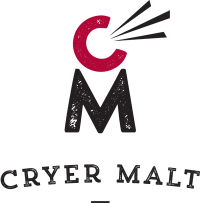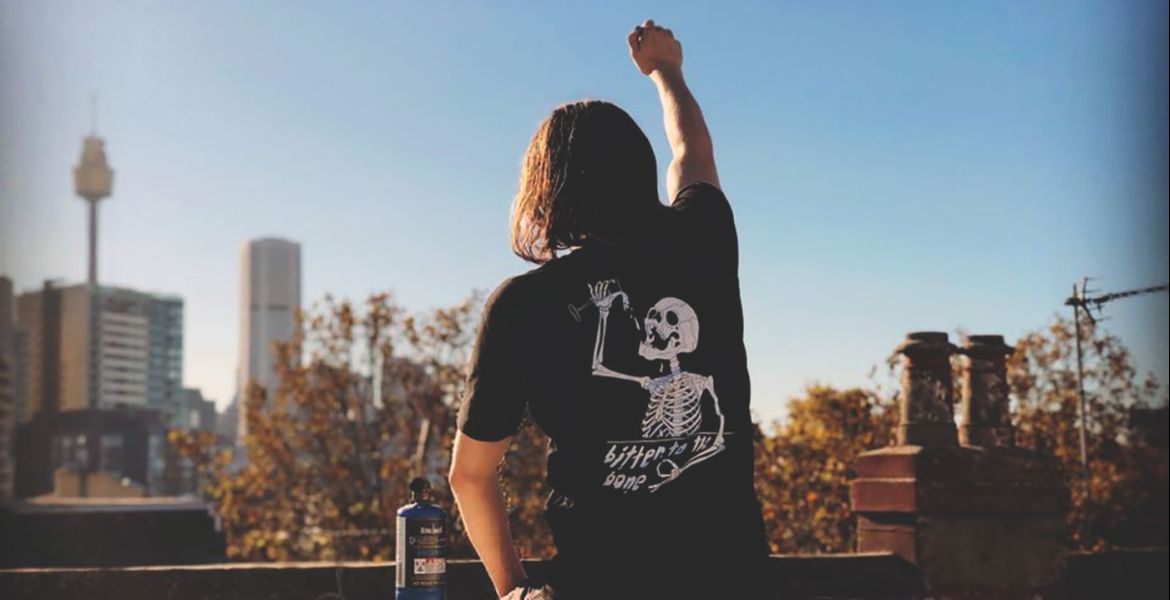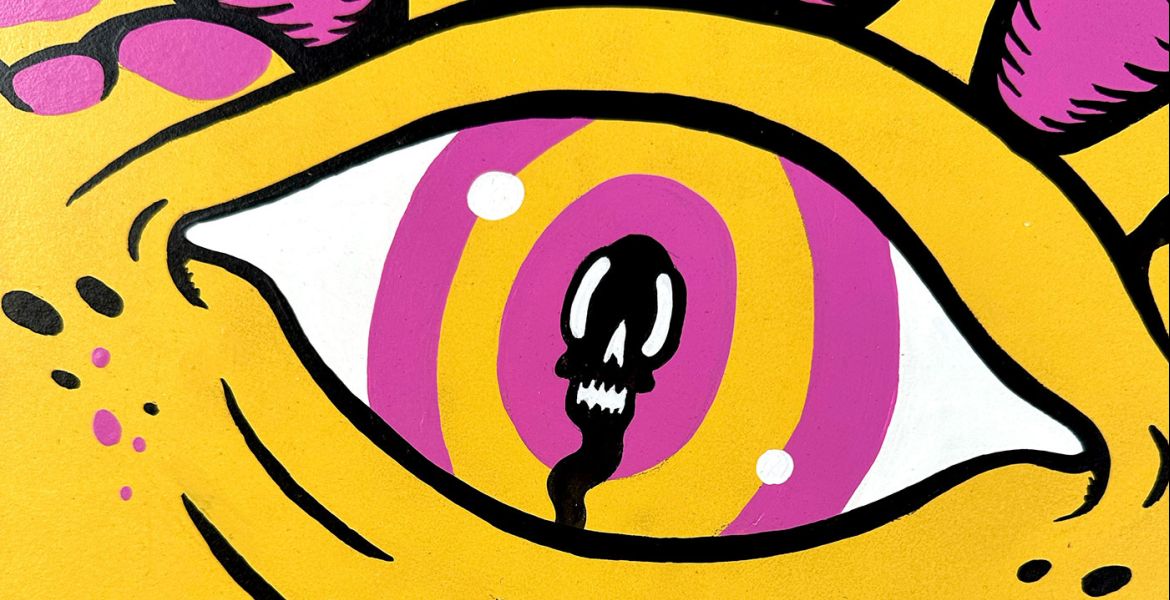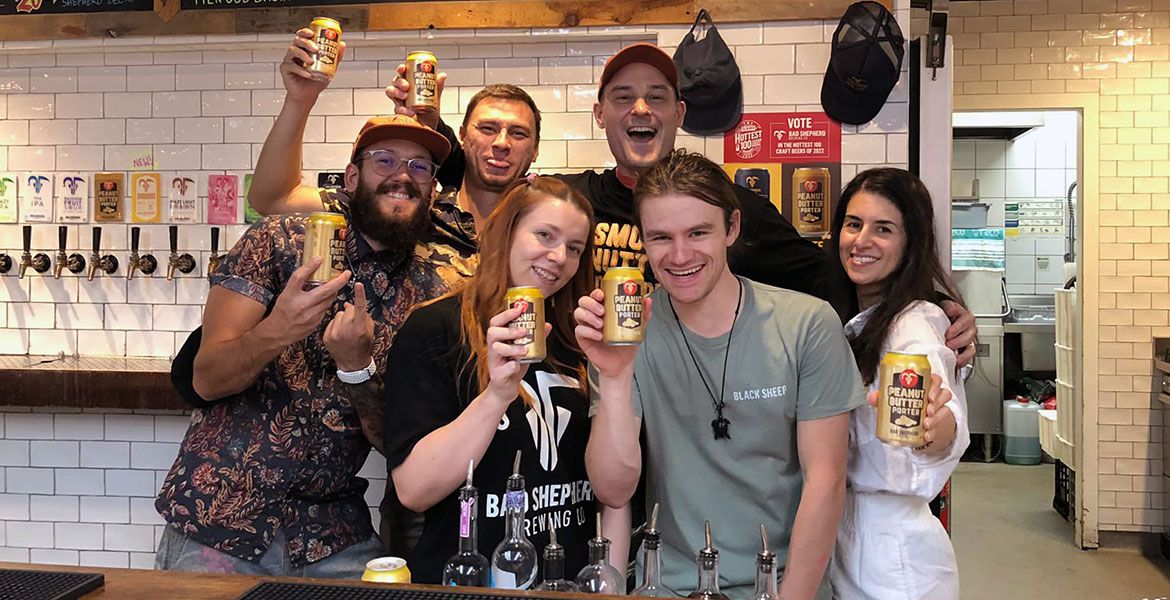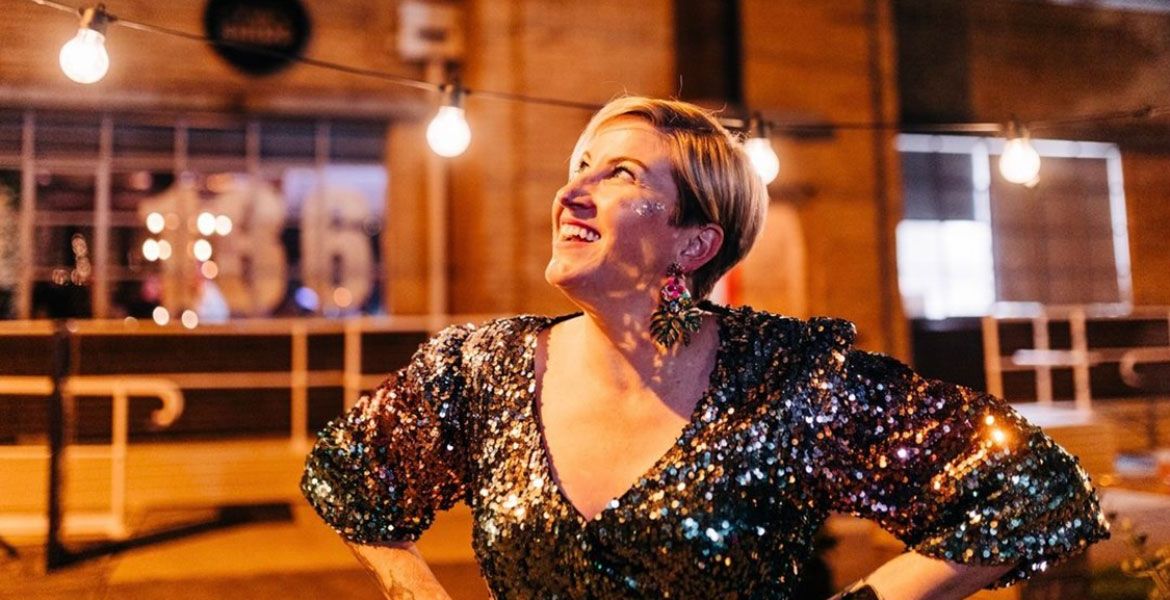Visit enough breweries and the experiences can start to blur into one. Sure, there's always going to be stainless steel and taps but there also tends to be a lot of old furniture, easy-to-move tables, and food trucks.
It's an experience many beer drinkers enjoy, with warehouses across the country turned into social hubs – even if they're sometimes too cold or too hot. Yet, as the beer industry continues to develop and mature, a growing number of breweries have become increasingly focused on delivering an experience that goes further: the pleasure of drinking a Moon Dog beer by an indoor lagoon, or gazing across to the ocean from Curly Lewis' Bondi-facing taproom, somewhere that feels like the perfect place to sip on a post-swim beer.
The brewpub or taproom model has always appealed to brewery owners as a means to make the best margin off their beer while being able to ensure it's stored properly and poured fresh. But, as well as being a place to brew and pour beers, a venue is also an extension of the brewery's brand, giving drinkers the chance to connect with and understand a brewer's story and, thus, making them more likely to look for their beer next time they're in a bottleshop.
Someone who appreciates the benefits of getting your hospitality right is Benedikt Schikora. He's the founder and director of BSK Projects, a consultancy business launched in 2017 that specialises in the management of hospitality, entertainment and tourism projects. As well as being a qualified architect, Benedikt is also a homebrewer with a passion for beer who has worked closely with a number of breweries to turn their visions into reality, including The Bob Hawke Beer and Leisure Centre.
“A well-designed venue should reinforce the brewery's image and tell your story,” he told The Crafty Pint.
“The design of the brewery venue should reflect your unique brand and identity: from the logo and colours used to the overall aesthetics.”

This needn't mean the production space has to be hidden away, however. Installing serving tanks directly behind the brewery bar has become increasingly popular, for example.
“Every brewery does want to show the stainless steel,” Benedikt says, “but they might have it somewhere in the background with lights on it so you can see it.”
He believes a thoughtfully designed brewery is about more than aesthetics and delivers a range of experiences that attracts customers and invites them to keep coming back.
“Creating a great atmosphere includes looking at factors like comfortable seating, visually appealing interior design, proper lighting, and a layout that facilitates easy navigation and interaction.
“It is important to create a natural flow through the venue so customers feel very comfortable in the space and have a memorable experience.”
When it comes to what makes a good venue, there’s no black and white answer. While many drinkers love the simplicity of a brewery, bar, tables and chairs in a converted warehouse, it's not for everyone. And, with so much competition for drinkers' palates today, creating a great atmosphere matters; Benedikt cites the example of one of his locals: Quakers Hat in Sydney’s Northern Beaches.
“The venue's atmosphere is created from a combination of being a family-run business – a father and his two sons, weekly live bands, trivia nights, and the fact that you are literally sitting in between the brew house and the fermentation vessels,” he says.
The charms of a building itself can be used to great effect, with Benedikt pointing to the Pivovar Staré Město in Prague: a small brewery where minimal work has been done to the front-of-house space.
“The owner simply used the existing features to naturally create a great venue, with only a small budget required for the actual front-of-house fit-out,” he says.
“If you are lucky enough to find a space that naturally has a lot of atmosphere you may not need to invest a lot of money into the front-of-house area.”
Interview continues below the case study...
The Bob Hawke Beer and Leisure Centre
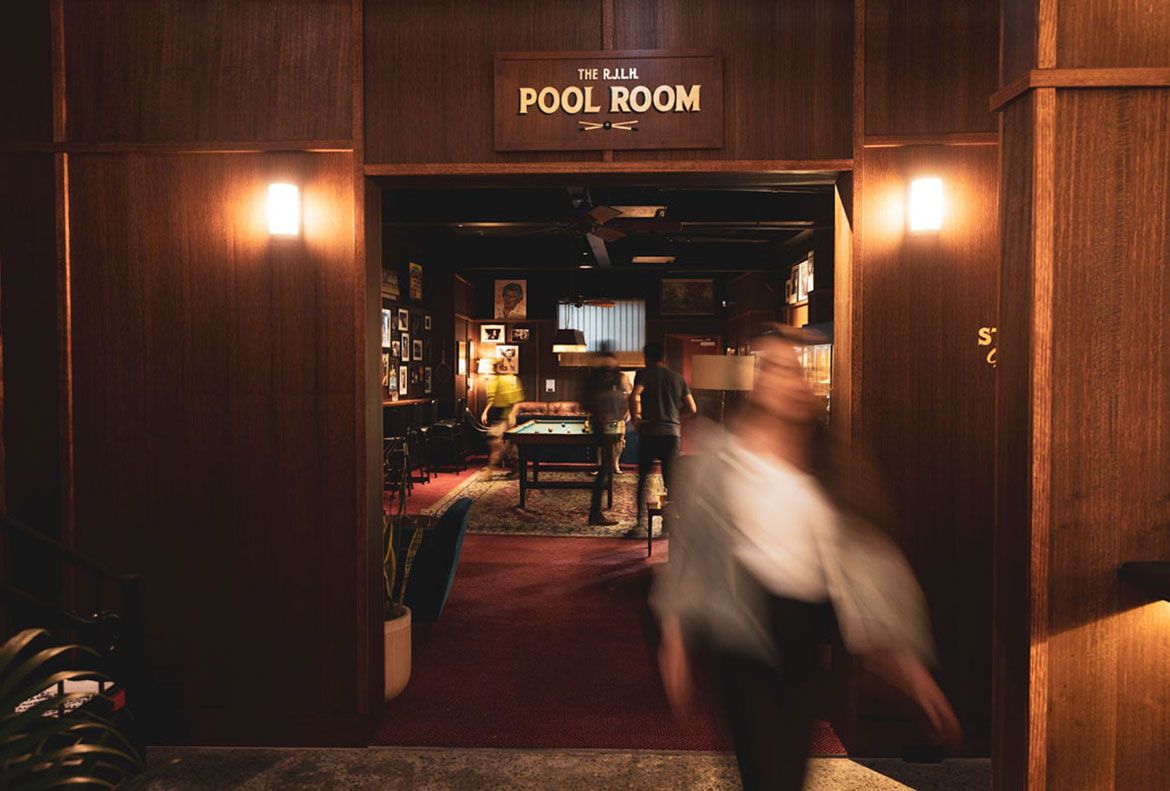
As anyone who has been would readily attest, The Bob Hawke Beer and Leisure Centre is a mighty impressive venue, very much an extension of the wider Hawke’s Brewing brand, which was launched in 2017 by Nathan Lennon and David Gibson with the blessing of the former PM.
Both founders had worked in the advertising industry as creatives and their 1980s-inspired pub is littered with references to Australia during Hawke’s time running the show. That includes the Lucky Prawn with a menu inspired by Chinese restaurants in country towns and the Richie Benaud commentary that plays in the toilets.
“They had a very clear vision I think that also sets Hawke’s apart,” Benedikt says.
“Every time you go, you find something else; there’s so much stuff on the walls and so many different details, and every time you go, you find something that’s interesting.”
Brewery general manager Glen Brasington says the advice they received early on was to make sure they went for significant brewing capacity but also to remember that hospitality was key to building a successful brand; their advisory chair Rob Murray ran Lion at the time they acquired Little Creatures.
“He really understood what that part of the business meant to that brand,” Glen says.
It meant they wanted a venue that could hold as many people as a pub, ending with a 300-person capacity. After securing the building, while they were setting up in craft beer-soaked Marrickville and near enough to a train station and busy roads, they knew they wouldn’t have people walking past.
“We have no passing traffic, no one walks past our brewery to go somewhere,” Glen says. “So, we realised early on that it was going to have to be a destination and that we’d have to cater for groups.”

As a result, they designed the hospitality experience around catering for groups of four to ten, with those numbers determining their layout and booking system. It also helped them develop the concept of the Lucky Prawn.
“Chinese food is traditionally shared; it's quite salty, spicy and goes well with beer,” Glen says. “We romanticised it a bit because we all grew up in country towns around Australia and there was always one Chinese restaurant.”
The finished restaurant ties in many of their memories: they aim to offer country town hospitality and there's a nod to their dads ordering Crown Lagers for a special occasion. Crownies are permanently sold out on the menu, one of the many hidden elements within the overall design.
“They call them little Easter eggs,” Glen says. “So, it’s the commentary in the toilets or fortune cookies with beer discounts inside. All those little subtle details make those experiences really memorable.”
The carpet in the Pool Room came from an old church and their restaurant chairs had already done 30 years of service in a Chinese restaurant in Queensland.
“We wanted people to see the tanks and to give people a really clear view of that,” Glen says of the decision to put the brewery on show above the bar.
“People want the confidence that the beer is good, it’s made there, and made properly. They can see it all properly but they don’t want to compromise a comfortable dining or drinking experience."
Plan To Succeed
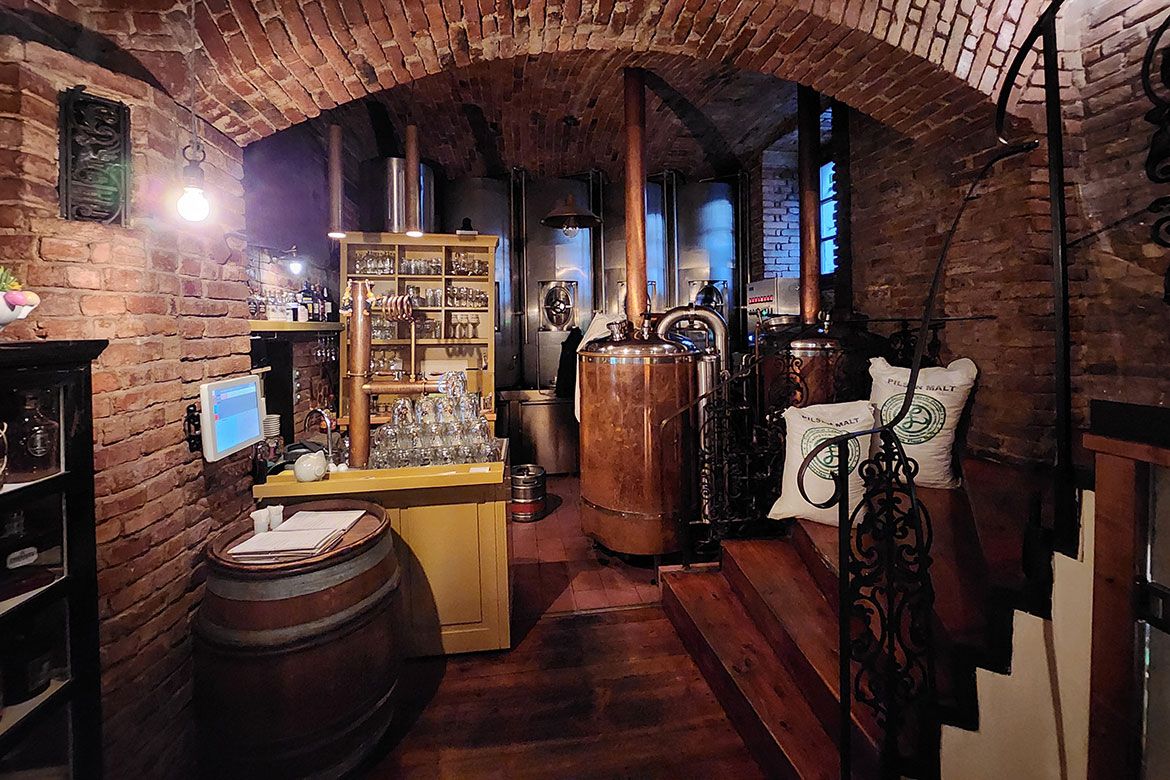
In terms of pulling off a successful brewery venue, Benedikt says initial planning needs to consider the build from the customer’s point of view as well as your own.
“It’s important to capture your vision in detail as it helps everyone involved to understand what you are aiming to achieve,” he says, citing vision scope, target audience, hours you plan on opening, when you want to get the doors open, and creating brand guidelines.
“Throughout the project, you’ll also be able to use this document to check the project's progress and identify any deviations early.”
Given breweries are manufacturing spaces as well as venues, the scale and scope of what you’ll brew is paramount too, including whether you'll sell into the wholesale market, plan to can beer, or need to leave space for expanding capacity.
“This will help ascertain the equipment you will require like keg washers and canning lines,” he says. “You’ll also need to determine the features being offered like catering, entertainment, and brewery tours. If you have grand plans, but only a small budget, consider starting small and planning for future growth.”
Planning the brewery space requires owners to consider the layout carefully to maximise brewing efficiency. A more efficient brewery isn’t just about maximising how much and how often you can brew, but makes for a better work environment for staff, which in turn flows on to the customer experience.
Once a project is defined, Benedikt says it’s key to surround yourself with a team that can deliver your dream – and remember that costs can easily blow out on any build.
“Everyone you speak to will confirm there are so many things you just wouldn't expect to happen that do," he says. "So, you need a contingency and a backup plan to be able to deal with them.”
For more tips from Benedikt, scroll past the second case study...
Love Shack Brewing

In the regional Victorian town of Castlemaine, Love Shack Brewing opened the doors to their venue earlier this year. Despite being a new venue, it feels like the kind of pub Bob Hawke would have enjoyed.
Co-founder Conna Mallet acted as project manager for the build and said the brewery’s design was informed by their branding and their location. The Gold Rush town’s main street is filled with grand, historic buildings but its proximity to Melbourne and thriving music and arts culture have seen it become known as a hipster hub that’s been referred to as North Northcote for well over a decade.
“I’d almost say it’s a quintessential Aussie pub with a brewery out the back,” Conna says. “We kind of let the town and the branding sculpt how the pub would look.
“Before we opened Love Shack, we were going to open up a pub and the brewery isn’t dissimilar to what that pub probably would have looked like.”
Although they had little in the way of money for their venue, what they did have was a concept, developed with one of their co-founders: Weekdays, a Melbourne-based studio that had tapped into nostalgia elsewhere with The Keys in Preston and Nico’s Sandwich Deli.
They moved the brewery in well before they opened the venue so knew the space well, down to where they wanted every bit of furniture and to go. Having spent a lot of time drinking in Melbourne’s classic pubs, Conna drew inspiration from the places he loved, like the Sporting Club in Brunswick with its wide, curved bar.
“I think all the mood boards in the world can get you to the place you get to just by going to a pub,” he says.

Although it only opened this year, Love Shack feels like it's been there forever and much of that is down to Conna’s love of op shopping. The paintings and frames have been collected over the past three years and he’s constantly looking for more stuff to add.
“I’ll have our deliver driver Tess constantly pick stuff up and it’s always like, ‘Great, more of Conna’s trinkets.’ You almost can’t buy what we’ve got," he says.
"You can’t employ a bunch of people and say, 'Alright, we want to get all this kitsch stuff.'"
He keeps a close eye on everything that's part of the Love Shack experience, including the music they play and how it matches the energy of the groups inside.
“I’m a bit of a stickler and have a fair bit of attention to detail, but it’s always just trying to figure it out and trying to get everyone on the same page.”
With the small brewery tucked out the back behind a door, it can take a trip to the toilet to even notice they make beer on-site. Keeping the brewery separate mattered to them as they wanted to balance a desire to educate visitors about how they brew with encouraging guests to stick around.
“It’s about giving people the chance to enjoy the brewery but also give them the space to drink and have a meal,” Conna says.
“I remember going to a brewery and, sat down with the family, all I could smell was bleach because they’d just scrubbed the floor.
“Everyone loves a brewery but how long for? You don’t love it for hours and hours and hours; you like to know the beers are made there and are fresh.”
What matters most?
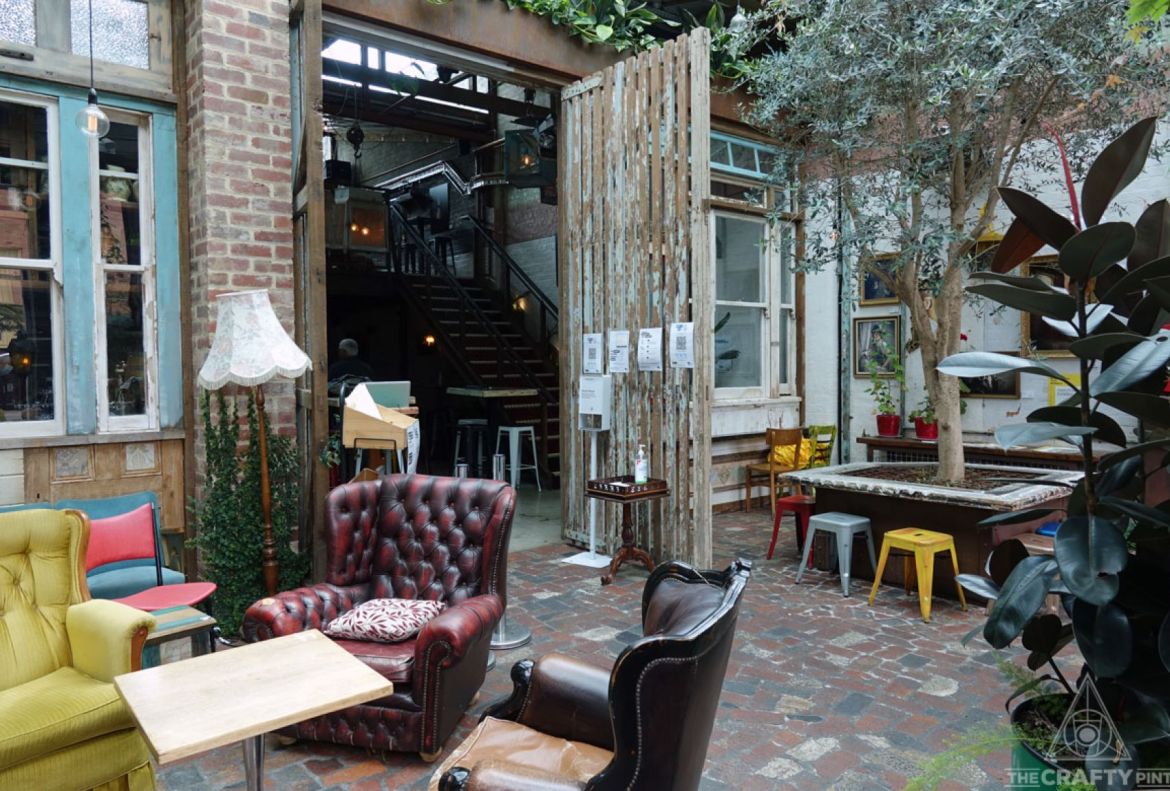
Thinking of starting a brewery, upgrading an existing space, or opening another venue for your brewery? Here are some tips from Benedikt on what to consider well before you start building.
BUDGET
The project budget should be one of the key considerations in the initial stages of a new brewery build or renovation as this will provide a guide for the next steps. The size of your budget will determine what is achievable and help to prioritise each element of the brewery build.
There are certain essential elements that must be accommodated for in the budget, namely what lies behind the scenes, or what is back of house, like the equipment required to run a brewery including a cool room, topping slab, drains, the actual brewery, glycol system, plumbing and so on.
Once these essential costs have been calculated, the balance of the budget determines how much is available for the look and feel for your customers in the front-of-house areas. The atheistic elements like guest seating, décor, lighting and so on shape the atmosphere and contribute to creating a memorable place.
YOUR UNIQUE SELLING POINT
What is going to make your brewery one to remember? How are you going to differentiate your brewery and make it stand out from the crowd? What is going to make your brewery an appealing venue to attract a dedicated customer base?
These questions are essential to determining the success of your brewery. Obviously, great beers are expected, but you also need to showcase your point of difference from your competitors. With lots of unique competition around, building a brewery in an old warehouse with wooden barrels as tables and milk crates as seats may not create that amazing first impression that you were hoping for – one that begs your customers to visit time and time again.
RETURN ON INVESTED CAPITAL
Another key consideration is your expected or required return on invested capital. How quickly you want or need to recover your initial financial outlay will help you to determine how to split your budget between BOH and FOH costs.
While BOH costs are essential they won’t drive your sales, unlike FOH costs which will, so it is important to make sure you get the ratio right.
PROGRAM
The program of a brewery build is another very important factor to consider. It’s important to know when you would like to open your venue, and equally important to know when you do not want to open your venue.
If you are a first-time operator, we recommend avoiding opening a new venue during busy periods, like the pre-Christmas period in December, as you will need time to train your team, settle into your new environment, and iron out any teething issues. Once you have chosen an opening date, you will need to consider all of the stages involved in building your brewery to determine if your preferred date is realistic and achievable.
BrewCon attendees eager to chat Benedikt and BSK about building breweries and all things beer can drop by Stall 100 or check out the presentation BSK Projects are involved in as part of the program.
The photo at the top of this article is by The James Adams.





